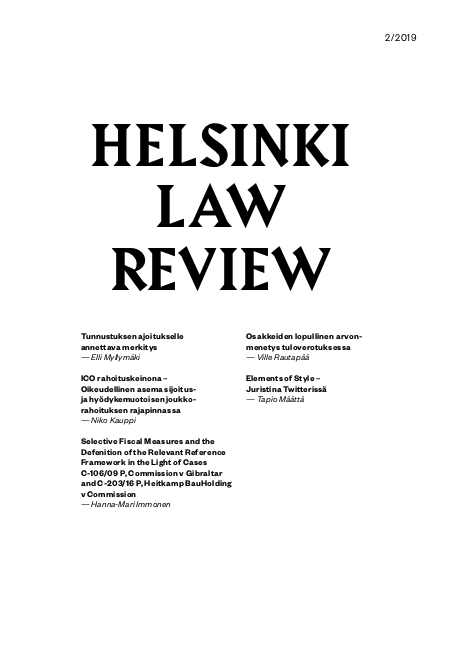Offender's confession during criminal procedure and the relevance of timing
lieventämisperusteen soveltamisedellytysten arviointia keskiössä tunnustuksen ajoitukselle annettava merkitys
DOI:
https://doi.org/10.33344/vol13iss2pp8-31Keywords:
criminal law, sentencing, determining the sentence, grounds for reducing the punishment, attempt to further the clearing up of the offence, confessionAbstract
Chapter 6, Section 6 (3) of the Criminal Code establishes as one possible grounds for the reduction of the punishment the offender’s attempt to further the clearing up of the offence. This study analyses the relevance of the timing of such behaviour, focusing especially on whether there is a time limit for when a confession must be made for it to have an effect on the punishment. To this end, the reasoning behind the provision for reducing the sentence in Chapter 6, Section 6 (3) of the Criminal Code is also important. The study introduces a new kind of categorisation of the relevance of the timing of the confession based on how the reasoning behind the provision has been assessed by the Supreme Court. The categorisation is founded on what information the authorities have about the offence or the offender at the time of confession. The situations are divided into two main categories: A) the offence or the offender’s connection to the crime is not known by the authorities at all; and B) the offence and the offender’s connection to the offence are mostly known by the authorities. These categories are then divided further into subcategories. Determining the significance of timing is also important for the practical application of criminal justice.



